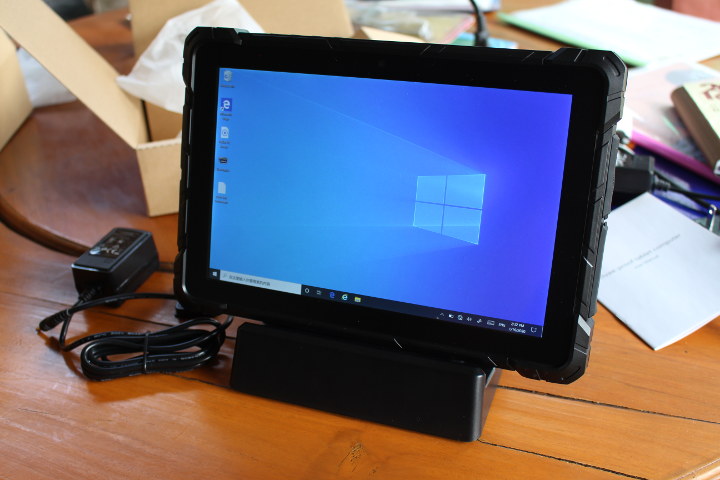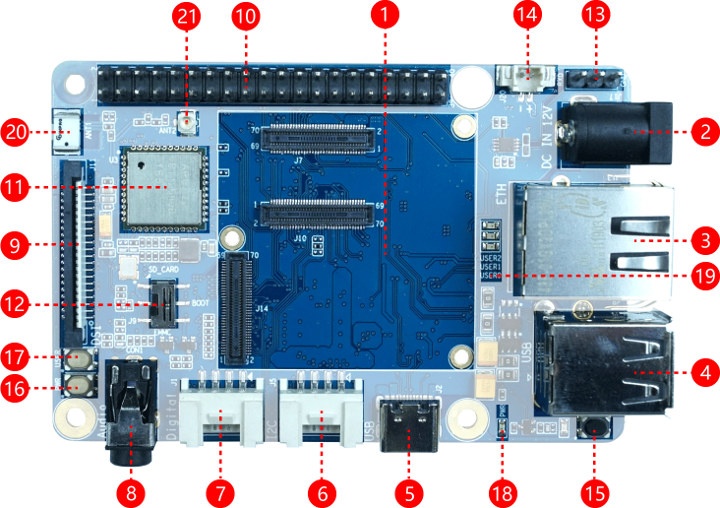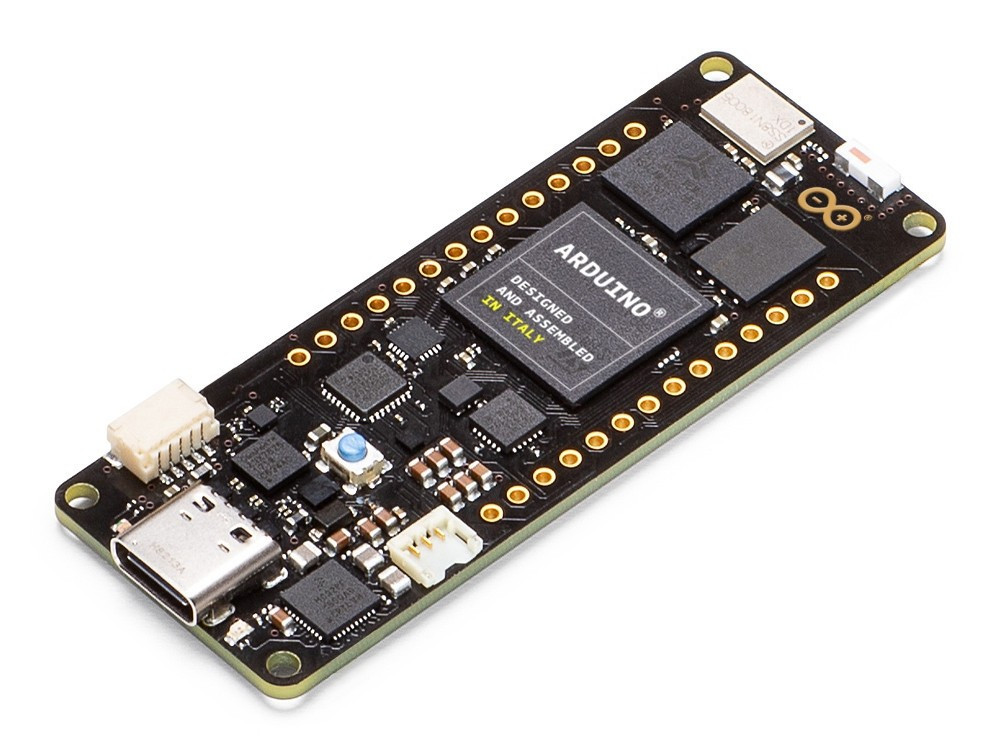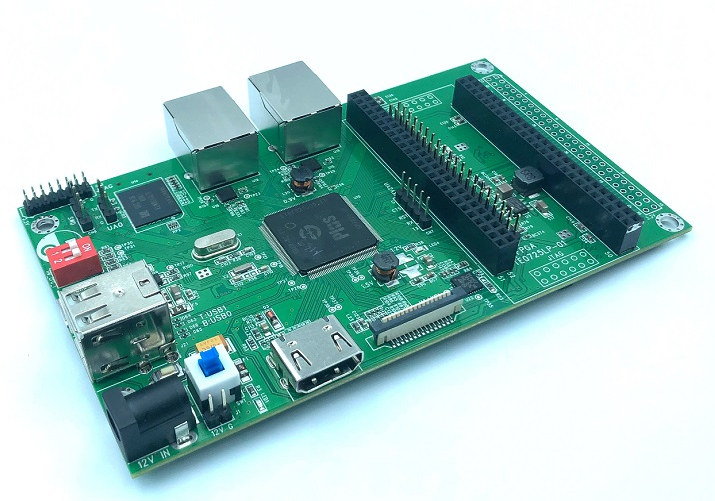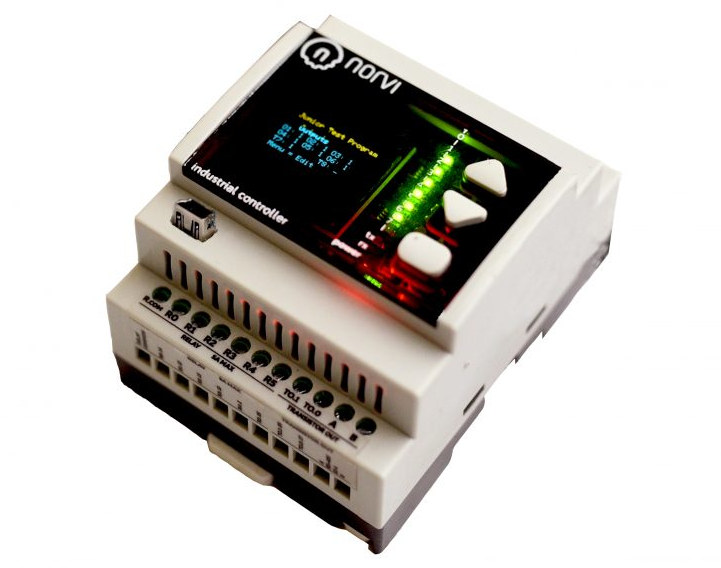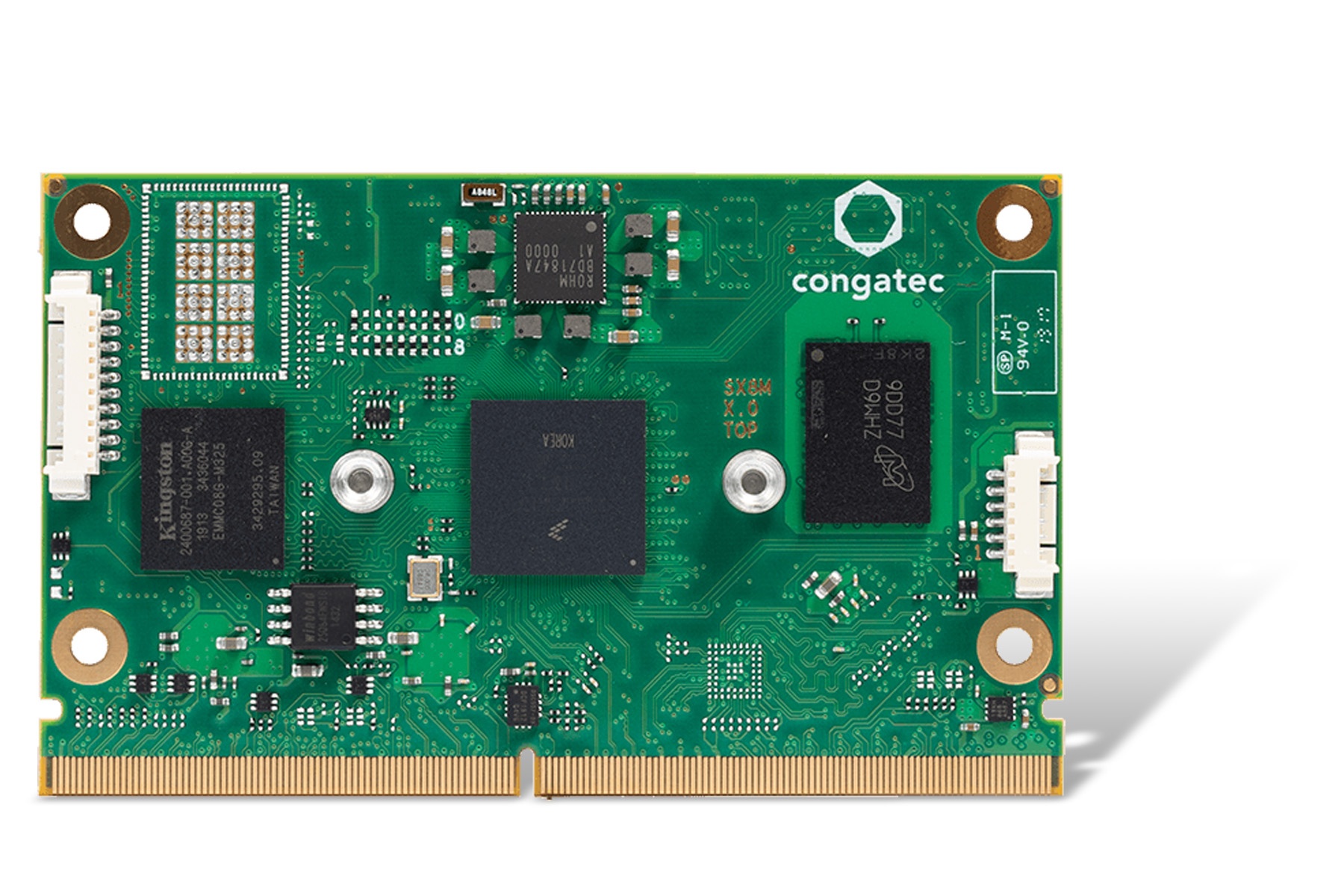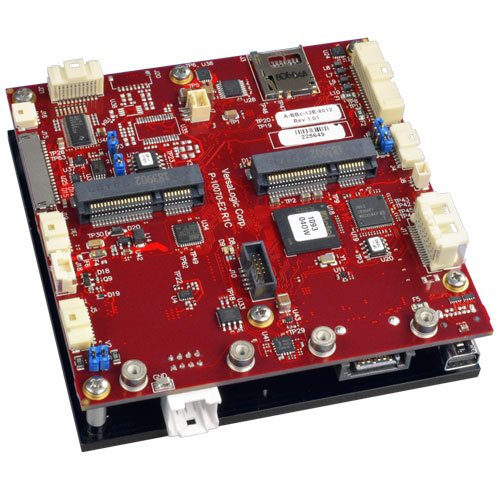GOLE F7 is a rugged Windows 10 Pro tablet with a 10.1″ touchscreen display, an Intel Atom x5-Z8350 Cherry Trail processor, and “triple-proofed” with resistance to shocks, waterproofness, and dustproofness (see full specs). The tablet also comes with various features that can be useful to industrial use cases. The company sent me a sample fitted with 4G, a QR and bar code scanner, and a fingerprint print, as well as a separate charging dock. I’ll first have a look at the device and its hardware features in the first part of the review before trying it out with Windows 10 Pro in the second part that will focus on special features and ruggedness. The tablet comes with a rubber cover to protect all sides. All ports are covered to make the tablet dust-and-waterproof, and I could easily pull those to reveal USB, Ethernet and a COM port on one side… […]
ODYSSEY-STM32MP157C SBC Feature STMicro STM32MP157C Cortex-A7/M4 SoC
Seeed Studio has been working on a single board computer powered by STMicro STM32MP157C Arm Cortex-A7/M4 microprocessor, comprised of the Raspberry Pi inspired NPi-STM32MP157C baseboard, and SoM-STM32MP157C system-on-module. SoM-STM32MP157C SoM Module specifications: MPU (1) – STMicro STM32MP157C dual-core Arm Cortex-A7 processor @ 650 MHz, and Arm Cortex-M4F MCU System Memory (2) – 512MB DDR3 RAM Storage (4) – 4GB eMMC flash Host Connectors – 3x 70-pin board-to-board connectors with HDMI, USB, Gigabit Ethernet, audio GPIOs, etc… Misc – Power and USER LEDs PMU (3) – STPMIC1A power management IC Dimensions – 38mm x 38mm The module is said to targets consumer and industrial applications, white goods, medical equipment, and wearable devices. NPi-STM32MP157C baseboard Key features and specifications: SoM Support – Compatible with SOM-STM32MP157C described above Storage – MicroSD card slot Display I/F – 1x MIPI DSI interface Audio – 3.5mm audio jack, WM8960 audio codec Camera I/F – 1x […]
Arduino Portenta H7 STM32H7 Cortex- M7/M4 Industrial Board Runs Arduino Code, Python and JavaScript
Arduino is now at CES 2020 promoting its Arduino Pro all-in-all IoT solution for professionals with the Arduino Pro IDE, Arm Pelion IoT platform for device management, and a new Portenta industry-grade board family starting with Arduino Portenta H7 board powered by STMicro STM32H7 dual-core Arm Cortex-M7/M4 microcontroller. Arduino Portenta H7 Specifications: Microcontroller – STMicro STM32H747XI Cortex-M7 @ 480 MHz + M4 @ 200 MHz MCU with 2MB dual-bank Flash memory, 1 MB RAM, Chrom-ART graphical hardware accelerator System Memory – 2MB SDRAM (upgradeable up to 64MB) Storage – 16MB QSPI NOR Flash (Upgradeable up to 128MB) Connectivity 2.4GHz WiFi 802.11b/g/n up to 65 Mbps and Bluetooth 5.1 BR/EDR/LE via Murata 1DX module On-board 10/100M PHY Video I/F – MIPI DSI & 8-bit camera interfaces via 80-pin expansion connector, DisplayPort over USB-C port USB – 1x USB 2.0 Type-C port for power (PD), programming, and DisplayPort output I/Os Arduino MKR […]
Some Interesting Talks from FOSDEM 2020 Schedule
We wrote about IoT devroom call for proposals for FOSDEM 2020 a little while ago, and as the free open-source developer meetup is getting closer, FOSDEM 2020 organizers released the schedule. So I’ll look at some of the talks in the relevant devrooms such as the Internet of Things, hardware enablement, Embedded, Mobile and Automotive, as well as RISC-V and others to compose my own little virtual schedule for the 2-day event. Saturday, February 1 10:30 – 10:50 – How lowRISC made its Ibex RISC-V CPU core faster – Using open source tools to improve an open-source core – by Greg Chadwick Ibex implements RISC-V 32-bit I/E MC M-Mode, U-Mode, and PMP. It uses an in-order 2 stage pipe and is best suited for area and power-sensitive rather than high-performance applications. However, there is scope for meaningful performance gains without major impact to power or area. This talk describes work […]
Banana Pi BPI-F2S Industrial SBC Launched for $58 with Linux 4.19 based Debian or Fedora OS
Last month we covered Banana Pi BPI-F2S single board computer (SBC) for industrial, IoT, and smart audio application that was powered by the intriguing SunPlus SP7021 “Plus1” processor featuring four Cortex-A7 cores, one ARM9 ARM9 real-time core, and one 8051 I/O controller core, as well as up to 512MB built-in DDR3 RAM. At the time, the board was not available, and we had limited information about software support, except the company would provide a Yocto-based Linux distribution. The good news is that you can now buy Banana Pi BPI-F2S industrial SBC on Aliexpress for $58 and Taobao for 390 RMB, and the company released source code and OS images for the board. Here’s a reminder of Banana Pi BPI-F2S specifications: SoC – Sunplus SP7021 “Plus1” with a quad-core Cortex-A7 processor @ 1.0 GHz, one Arm A926 microprocessor, an 8051 core to handle I/Os, and 128MB or 512MB DDR3 DRAM. Storage […]
NORVII IIoT ESP32 Industrial Controller Comes with Built-in OLED or TFT Display, DIN Rail Mount
We’ve previously covered at least one ESP32 industrial controller with TECHBASE Moduino X equipped with digital and analog I/O terminals, a 0.96″ OLED display, and support for various expansion cards for RS-485, LoRa, Sigfox… beside Ethernet, WiFi, and Bluetooth connectivity offered by the Espressif Systems chip. NORVII IIOT industrial controller – based on ESP32-WROOM-32 module – offers many of the same options as the TECHBASE model, but also integrates a choice of 0.96″ to 1.44″ OLED or TFT display, and comes with plenty of LED’s to ease troubleshooting. There are five variants from three series (AE01, AE02, and AE03) sharing the following specifications: Wireless Module – ESP32-WROOM32 with ESP32 dual-core processor @ 160 MHz, 520 Kbytes SRAM / 4 Mbit Flash, WiFi 802.11 b/g/n Bluetooth 4.2 Storage – Optional microSD card slot Display -Built-in 0.96″ OLED display. 0.96″ TFT display or 1.44″ TFT display Communication – RS-485, WiFi, Bluetooth, optional […]
Congatec Conga-SMX8-Nano SMARC 2.0 CoM Features NXP i.MX 8M Nano Processor
Congatec Announces Ultra-Low-Power SMARC 2.0 CoM Congatec has come out with a new CoM, the Conga-SMX8-Nano that carries up to 4x ARM Cortex-A53 and 1x Cortex-M7 cores with a full spectrum of options. The SMARC 2.0 module can meet ultra-low-power requirements, offers low cost, as well as high-level performance. Background Information Background on NXP i.MX 8M Nano processors and modules have been reported in our report about iWave’s iW-RainboW-G34M-SM SoM and the introduction of the i.MX 8M Nano ARM Cortex-A53 and M7 processor to the market. A Board for the Industry The intention here is to develop a board that has high performance, ultra-low power requirements and can reach high volumes at low cost. The modules are scalable to the conga-SMX-8-Mini CoM, with options for a multitude of setups across types. Example Uses for conga-SMX8-Nano The company offers the example of a complex medical user interface that engineers might want […]
Versalogic Owl Small Form Factor Apollo Lake Embedded Computer Targets Military & Industrial Applications
VersaLogic Owl VL-EPU-4012 Embedded System Computer In October 2019 we reported on the VersaLogic Harrier computer that was slightly bigger than a credit card. Just announced by the company is a new embedded computer system is being developed, the Owl. Basics of the VersaLogic Owl The intended uses are again industry and military-grade applications. The system uses ECC memory and the Embedded Processing Unit (EPU) format. The processing unit is an Intel Atom E39xx Platform, 5th Gen Apollo Lake processor with dual or quad-core options. Strength and Resilience The ECC memory is fixed to the board and can be up to 8 GB in size. This reduces the damage that can be caused by vibration and shock, making the system tough and resilient. Available Ports and Security Hardware-based security is through a TDM 2.0 chip. There are onboard power conditioning, mini-PCIe expansion sockets, analog inputs, standard USB 3.0 and 4x […]


